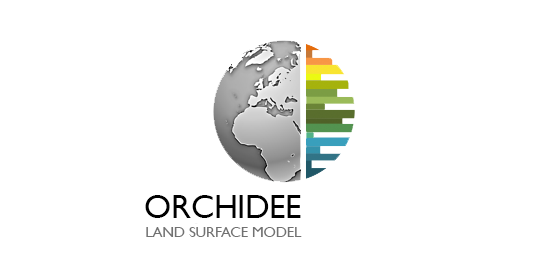| Version 3 (modified by nvuilsce, 11 years ago) (diff) |
|---|
Branch on Photosynthesis
This branch is open-access here.
It aims to :
- add an analytical solution solving the equations that define jointly the assimilation (A), the stomatal conductance (gs) and the intercellular CO2 partial pressure (Ci)
- reshape the overall structure of the photosynthesis and stomatal conductance models - still based on the formulations of Farquahr et al. and Ball et al. - to be more in agreement with recent published works.
To perform this work, a literature review has been done. Here is the list of the articles that have been used for developping this branch:
- Yin X, Struik PC. C3 and C4 photosynthesis models: an overview from the perspective of crop modelling. NJAS-Wageningen Journal of Life Sciences 2009.
- C.J. Bernacchi, A.R. Portis, H. Nakano, S. von Caemmerer, S.P. Long, Temperature response of mesophyll conductance. Implication for the determination of Rubisco enzyme kinetics and for limitations to photosynthesis in vivo, Plant Physiology 130 (2002) 1992–1998.
- C.J. Bernacchi, E.L. Singsaas, C. Pimentel, A.R. Portis Jr., S.P. Long, Improved temperature response functions for models of Rubisco-limited photosynthesis, Plant, Cell and Environment 24 (2001) 253–259.
- B.E. Medlyn, E. Dreyer, D. Ellsworth, M. Forstreuter, P.C. Harley, M.U.F. Kirschbaum, X. Le Roux, P. Montpied, J. Strassemeyer, A. Walcroft, K. Wang, D. Loustau, Temperature response of parameters of a biochemically based model of photosynthesis. II. A review of experimental data, Plant, Cell and Environ- ment 25 (2002) 1167–1179.
- Kattge, J. and Knorr, W.: Temperature acclimation in a biochemical model of photosynthesis: a reanalysis of data from 36 species, Plant Cell Environ., 30 (2007) 1176–1190.
- Keenan, T., et al., Soil water stress and coupled photosynthesis–conductance models: Bridging the gap between conflicting reports on the relative roles of stomatal, mesophyll conductance and biochemical limitations to photosynthesis. Agric. Forest Meteorol. (2010)
Analytical solution for the assimilation
Based on the work of Farquhar, von Caemmerer and Berry who published in 1980 a biochemical model for C3 photosynthetic rates (the FvCB model), Yin et al. propose an analytical algorithm that incorporates a gs model and uses gm as a temperature-dependent parameter for calculating Assimilation based on the FvCB model for various environmental scenarios. Yin et al. also propose a C4-equivalent version of the FvCB model and an associated analytical algorithm for this model. They believe that applying FvCB-type models to both C3 and C4 crops is recommended to accurately predict the response of crop photosynthesis to multiple, interactive environmental variables. Many of the photosynthetic parameters and conductances used in their modeling scheme are defined with the following equations, which is an modified Arrhenius function:

Temperature Acclimation of Photosynthetic parameters
Based on a reanalysis of data from 36 species, Kattge and Knorr propose a parametrization where Jmax and Vcmax at 25°C are defined jointly thanks to a Jmax:Vcmax ratio. Based on their analysis, they found that
